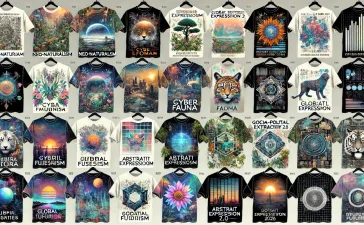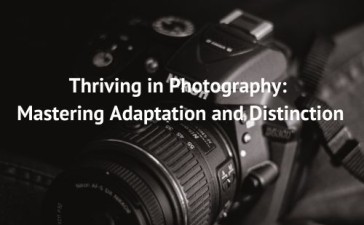Scandinavian design has become a timeless aesthetic, celebrated for its simplicity, functionality, and natural beauty. With roots in the Nordic countries, this style emphasizes clean lines, organic shapes, and an inviting warmth that draws from both nature and folk traditions. In recent years, Scandinavian motifs have found a place in interior design, fashion, and art. As an artist or surface designer, embracing Scandinavian-inspired designs can open up new creative avenues, offering a blend of tradition and modernity. This article will guide you through popular motifs, animals, patterns, and folk art that you can use to create unique designs with a Scandinavian feel.
The Origins and Philosophy of Scandinavian Design
Scandinavian design originated in the early 20th century, but its global popularity soared after World War II. This design movement was heavily influenced by the harsh Nordic climate, where functionality and comfort were essential. Scandinavian countries—Denmark, Norway, Sweden, Finland, and Iceland—sought to create aesthetically pleasing, affordable, and functional designs that could withstand their environment while still evoking a sense of warmth and coziness. The key principles of Scandinavian design include:
- Minimalism: Clean lines and simple shapes are at the heart of Scandinavian aesthetics. Minimalist designs avoid excess and focus on essential elements.
- Nature: The Scandinavian lifestyle is deeply connected to nature, which is reflected in the use of natural materials like wood, wool, and linen, as well as motifs inspired by flora and fauna.
- Functionality: Every design element should serve a practical purpose, blending beauty with usability.
- Hygge: The concept of hygge—a Danish term that refers to coziness and contentment—plays a crucial role in Scandinavian design. Soft textures, muted tones, and simple patterns create an atmosphere of warmth and well-being.
Popular Motifs in Scandinavian Design
Scandinavian design features a variety of motifs that reflect the region’s cultural heritage and natural surroundings. As a surface designer or artist, incorporating these elements into your work will give it an authentic Nordic touch while still allowing room for personalization and creativity.
- Floral Motifs:
- Scandinavian design often incorporates stylized floral elements, usually rendered in simple, repetitive patterns. The flowers are typically depicted with minimal detail, focusing on symmetry and balance.
- Popular motifs include tulips, daisies, snowd
rops, and lily of the valley. These flowers are often arranged in a repetitive, symmetrical style, which can be both modern and vintage in feel.
2. Geometric Patterns:
-
- Clean, simple geometric shapes are a hallmark of Scandinavian design. Triangles, circles, and diamonds often appear in patterns, creating a minimalist yet striking visual effect.
- Repetitive grids, honeycombs, and chevrons are common in Nordic textiles and wallpapers. These patterns add a sense of order and calm, reflecting the balance between simplicity and complexity in Scandinavian design.
3. Animal Motifs:
-
-
- Animals native to the Scandinavian region are frequently used in folk art and contemporary design. Think of reindeer, foxes, wolves, and bears as central motifs, especially during the winter months when these creatures evoke the wilderness of the Nordic landscape.
- Birds such as robins, owls, and swans also feature prominently, often depicted in a stylized, almost whimsical manner.
-
4. Nature Elements:
-
-
-
- Aside from animals, Scandinavian design also embraces the natural landscape—forests, mountains, lakes, and rivers. Pine trees, snow-capped mountains, and stylized waves represent the close connection to nature and the outdoors.
- Minimalist depictions of these landscapes, often in soft, muted tones, can evoke a sense of peace and harmony.
-
-
Scandinavian Folk Art: A Rich Source of Inspiration
Scandinavian folk art is a treasure trove for surface designers and artists seeking inspiration. Often referred to as “rosemaling” in Norway or “kurbits” in Sweden, this art style features intricate, flowing floral patterns, scrolling vines, and stylized natural elements. Folk art is traditionally hand-painted on wooden items like furniture, doors, or kitchenware, but its influence can extend to modern textiles, wallpapers, and home decor.
Key features of Scandinavian folk art include:
- Symmetry: Scandinavian folk art often emphasizes symmetry and repetition. This is particularly noticeable in floral and botanical designs.
- Bright Colors: Traditional folk art uses a bold palette, often contrasting with the softer, muted tones of modern Scandinavian design. Bright reds, blues, greens, and yellows are typical of this style, providing a joyful burst of color.
- Floral and Botanical Elements: Folk art designs often feature lush, stylized floral patterns with flowing, curvilinear lines. These can be modernized by incorporating softer colours and minimalist shapes while still maintaining the essence of Scandinavian folk traditions.
Bringing a Modern Twist to Scandinavian Designs
While traditional Scandinavian motifs are rooted in simplicity and nature, they can be reimagined to suit contemporary tastes and trends. As we move towards 2026, there is growing interest in blending tradition with innovation, making this an opportune moment for artists and surface designers to explore Scandinavian-inspired themes.
- Muted Pastels and Earthy Tones:
- For a modern take, swap the bright folk art colours for more subdued, earthy tones or soft pastels. This colour palette aligns with the ongoing trend toward minimalism and sustainability.
- Muted blues, grays, soft greens, and warm beige hues will keep your designs on trend while maintaining a cozy, welcoming aesthetic.
- Abstract Minimalism:
- Combine geometric patterns with abstract forms to create a modern Scandinavian look. Think simple shapes with organic, flowing lines that evoke the feeling of the natural world without being literal.
- Minimalist, abstract depictions of mountains, trees, or animals will resonate with a contemporary audience.
- Sustainability Focus:
- As sustainability continues to dominate design trends, the eco-conscious values of Scandinavian design will become even more popular by 2026. Consider working with natural materials and focusing on designs that reflect simplicity and environmental consciousness.
Is Scandinavian Design Trending for 2026?
Yes, Scandinavian design is likely to continue its upward trend into 2026. Several factors contribute to this prediction:
- Simplicity and Functionality: As people seek out simpler, more meaningful lifestyles, the minimalist and functional aspects of Scandinavian design are increasingly appealing. This trend will likely strengthen in response to growing concerns over consumerism and environmental impact.
- Wellness and Comfort: The popularity of hygge and the wellness industry’s focus on comfort, balance, and mental well-being will keep Scandinavian designs relevant. People will continue to embrace designs that promote relaxation and comfort in their living spaces.
- Sustainability: With an emphasis on natural materials and eco-friendly design, Scandinavian aesthetics align with the global push toward sustainable living. As consumers become more environmentally conscious, the demand for Scandinavian-inspired products will grow.
Woodland Foxes and Deer Snow_ by Valerie Khoo
Here are 20 pattern prompts based on Scandinavian design, inspired by the motifs and elements discussed in the article:
- Minimalist Pine Forest: Create a pattern featuring a stylized, repeating motif of pine trees with clean lines and soft, muted greens and grays, evoking the peacefulness of a Scandinavian forest.
- Geometric Snowflakes: A repetitive pattern of symmetrical, geometric snowflakes in cool tones like white, icy blue, and soft gray, with hints of metallic accents for a wintery Scandinavian touch.
- Folksy Reindeer: Design a folk-art-inspired pattern featuring reindeer with curving, decorative antlers, placed among simple floral elements like tulips or daisies, rendered in traditional Scandinavian colors like red and white.
- Hygge Cozy Knit: Develop a pattern inspired by Nordic knitwear, with repetitive rows of triangles, zig-zags, and diamonds in soft pastels and earthy tones, mimicking the texture of a cozy sweater.
- Abstract Mountains: A minimalist, abstract design featuring simplified mountain shapes and flowing lines to evoke the Scandinavian landscape, paired with soft blues, greens, and neutral tones.
- Symmetrical Floral Motifs: A pattern featuring stylized flowers, such as daisies and snowdrops, arranged in a symmetrical grid with a focus on simplicity and balance, using bold primary colors contrasted with muted backgrounds.
- Folk-Art Birds: Design a repeating motif of birds like swans, robins, and owls in a folk-art style, with decorative details on wings and tail feathers, placed against a neutral backdrop.
- Nordic Geometric Patterns: Create a repeating grid of geometric shapes like diamonds, hexagons, and circles in a minimalist Scandinavian style, using a subdued color palette with subtle pops of color.
- Stylized Reindeer and Trees: A whimsical winter pattern of reindeer walking through stylized pine trees, with minimalistic detailing in warm browns, dark greens, and touches of gold.
- Scandinavian Folk Scrollwork: Develop a flowing, vine-like pattern inspired by Scandinavian folk art, with delicate scrolling tendrils and simple flowers in deep reds, yellows, and blues.
- Muted Landscape Lines: Create an abstract pattern of horizontal lines and minimalist shapes representing mountains, lakes, and forests, using earthy tones like beige, soft brown, and faded green.
- Stylized Foxes in the Forest: A playful pattern featuring foxes walking through a Scandinavian forest with stylized trees and leaves, focusing on simple shapes and muted fall colours like ochre and rust.
- Snow-Covered Nordic Village: A cozy winter village scene depicted in a repeating pattern with simple, stylized houses, trees, and snowy landscapes in soft whites and cool blues.
- Abstract Water Waves: A repeating motif of abstract, flowing water waves inspired by Scandinavian lakes and rivers, rendered in deep blues and soft greens with a minimalist aesthetic.
- Scandi Birds and Berries: A folk-inspired pattern featuring birds perched among simple branches and berries, with a warm, natural color palette of reds, greens, and neutrals.
- Floral Mandala Pattern: Create a mandala-style pattern using stylized Scandinavian flowers like tulips and daisies, arranged symmetrically with repetitive, curving lines in soft pastel colours.
- Simple Geometric Nordic Houses: A pattern of stylized, geometric Scandinavian houses, paired with abstract trees and mountains, rendered in muted earth tones for a minimalistic look.
- Reindeer and Snowflakes: A festive, repeating winter pattern featuring reindeer intertwined with simple, symmetrical snowflakes, using a monochromatic palette with silver or gold accents.
- Floral-Inspired Lattice Pattern: Develop a repeating lattice pattern inspired by Scandinavian floral motifs, with flowers placed within a geometric framework, rendered in contrasting dark and light tones.
- Folk-Inspired Floral Borders: Design a pattern with a border effect, featuring flowing floral designs inspired by Scandinavian folk art, paired with minimalist shapes and a limited colour palette.
These prompts can help guide artists and surface designers to create Scandinavian-inspired patterns that balance tradition with contemporary aesthetics.
Conclusion
Scandinavian design offers endless creative possibilities for artists, surface designers, and anyone interested in modern yet timeless design. By incorporating popular motifs, animals, folk art, and nature-inspired patterns, you can create works that resonate with the minimalist, functional, and cozy aesthetic of Nordic design. As trends shift toward sustainability and simplicity, Scandinavian-inspired art and patterns are poised to remain popular well into 2026, making it a fertile ground for creativity and innovation.
- Find out more
- Launch Pad + Accelerator Expressions of Interest
- Selling and Licensing Your Art & Designs Around the World with ArtSHINE.
- Looking for exciting new Art and Designs to license.
We’re here to help you to take action, just like we’ve helped thousands of other entrepreneurs, business owners, and creative professionals all around the globe.
Now is the time to let your passion SHINE.
Now is the time to Make Tomorrow Today!
To your success, Vinh Van Lam and Stuart Horrex Cofounders ArtSHINE.com






